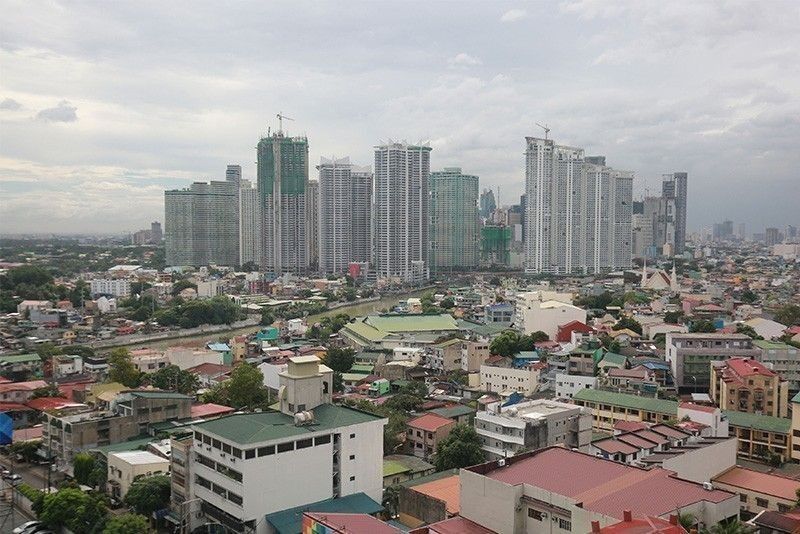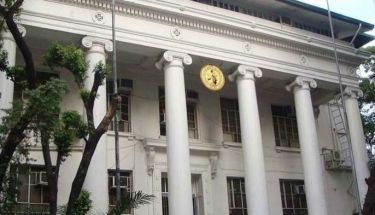Philippines economy crash-lands into recession

MANILA, Philippines — The country plunged into a recession in the second quarter of the year, with output contracting by a record 16.5 percent after a months-long government-enforced lockdown paralyzed 75 percent of the economy.
This was the worst quarterly slump on record since the contraction of 10.7 percent in the third quarter of 1984 and 10.5 percent in the first quarter of 1985.
After a downward revision of first quarter economic decline to 0.7 percent, first half contraction could average around nine percent, Philippine Statistics Authority head Dennis Mapa said yesterday.
“The Philippine economy crash-landed into recession with the Q2 GDP (gross domestic product) meltdown showcasing the destructive impact of lockdowns on the consumption-dependent economy,” said ING senior economist Nicholas Antonio Mapa.
The country’s second quarter decline was steepest among neighboring Asian countries that also reported declines during the quarter such as Indonesia, Thailand, Singapore, Hong Kong and Malaysia.
Malacañang expressed concern over the steeper-than-expected economic contraction but remains optimistic that the sectors worst hit by the pandemic would recover with help from the government’s proposed stimulus package.
As of the first semester of the year, the economy is valued at around P8.6 trillion versus P9.28 trillion in the first semester of 2019.
Among major industries, only the agriculture sector registered growth in the second quarter at 1.6 percent. The industry and service sectors, meanwhile, realized contractions of 22.9 percent and 15.8 percent, respectively.
Sectors that contributed to growth in the second quarter were financial and insurance activities, public administration, defense and compulsory social security, and information and communication.
Mapa said this reflected the demand for loans and financial services during the quarter, as well as heightened demand for IT and communication tools during the lockdown period.
Contributing to the decline were the manufacturing, construction and transportation and storage sectors at 3.9 percent, 2.5 percent and 2.5 percent, respectively.
On the expenditure side, household consumption declined by 10.7 percent, reflecting diminished demand.
Spending for construction and durable equipment also declined by 5.5 percent and 4.2 percent, respectively, as consumption and business expansions were put on hold due to the lockdown.
Economic performance in the third quarter risks being affected by the re-imposition of a stricter community quarantine in Metro Manila and nearby growth areas from Aug. 4 to 18.
Acting Socioeconomic Planning Secretary Karl Chua maintained yesterday that the economy remains in a good position to weather the public health crisis.
“Without doubt, the pandemic and its adverse economic impact are testing the economy like never before. But unlike past crises, the Philippines is now in a much stronger position to address the crisis,” he said.
“Reverting back to MECQ may be one step back for the country’s economic recovery, but the government remains committed to addressing immediate challenges without losing sight of our medium- and long-term goals,” he added. MECQ or modified enhanced community quarantine is a notch lower than the strictest enhanced community quarantine or ECQ.
Target adjustments
Factoring in the re-imposition of the MECQ, the Development Budget Coordination Committee (DBCC) has revised the growth estimates this year to a negative 5.5 percent from the previous projection of negative two to negative 3.4 percent.
“That incorporates already the effect of the MECQ. We hope to maximize this two-week period to strengthen the health system so we can boost consumer confidence in the remaining five months of the year,” said Chua.
The government has allocated some P655 billion to help people cope with the pandemic and P59 billion to improve the healthcare system, but this has done little to ease the pain of a population facing record-high unemployment.
Jomar Santos, who used to earn P350 a day delivering school supplies to stores in Caloocan city, has been at home since the lockdown resumed on Tuesday and worries about his wife and one-year-old child.
“It’s really very hard. No work, no food to eat,” said the 23-year-old Santos.
“There’s nothing we can do except to bear it. That’s better than me and my family getting sick,” he added.
The stock market largely shrugged off the data and rose 1.2 percent, having already under-performed its regional peers this year. The local currency closed slightly firmer at P49.05 to the dollar from Wednesday’s P49.075.
Pressure is mounting on the government to deliver more far-reaching support, given the central bank has already cut interest rates to record lows this year and that economists see little room for more monetary easing as inflation rises.
“The worst is behind us, but we’re not out of the woods yet,” Bangko Sentral ng Pilipinas Governor Benjamin Diokno said yesterday.
The central bank has slashed interest rates by a total of 175 basis points this year to a record low of 2.25 percent.
Michael Ricafort, economist at Rizal Commercial Banking Corp., said it is “fundamentally tougher to further cut local policy rates at the moment” when inflation is at a six-month high of 2.7 percent in July, above the central bank’s key interest rate.
Instead, policy support will have to come from further reductions in banks’ reserve requirement ratio, which would inject liquidity into the market, or more government stimulus, economists said.
Presidential spokesman Harry Roque Jr. said that while the second quarter growth figure was alarming, “our resolve to recover at the soonest time possible, however, remains strong.”
“We expect an improvement in the performance of these sectors during the second semester of the year, with our gradual reopening of the economy, as well as our proposed stimulus measures,” Roque said, referring to manufacturing, construction, transportation and storage sectors.
Recovery program
Economic managers, Roque said, have crafted a “phased and adaptive” economic recovery scheme called the Philippine Program for Recovery with Equity and Solidarity or PH-Progreso to counter the pandemic’s effects on business and livelihood.
“We have likewise recalibrated our budget for next year and restarted our Build, Build, Build programs, subject to health and safety protocols, to create jobs,” the Palace spokesman said.
“The Palace is aware of the hardships and the sufferings of our people. We thus provided an emergency subsidy program, which is considered the largest single relief program in the country’s history, when we took the painful choice of imposing the strictest quarantine measure on our people,” he added.
Although blamed largely for the economic contraction, presidential communications Secretary Martin Andanar emphasized that the lockdowns helped safeguard public health and prevented the spread of the virus.
“Although our lockdown and community quarantine implementation had an impact on our economic performance, it served as a cushion to our society’s general health, protection and well-being against COVID-19,” Andanar said in a statement.
“Furthermore, it served as a safety net to suppress the collapse of our healthcare system and assist our frontline healthcare workers, who have been tirelessly responding to the pandemic since it began,” he added.
Andanar said the quarantine measures prevented an estimated 1.3 to 3.5 million cases, which would have overwhelmed the country’s healthcare system. The move also saved some 59,000 to 171,000 lives, he added.
“It is worth noting that while facing this crisis, we are now in a much stronger economic position to address such circumstances in the long-term,” Andanar said.
“Apart from strong economic foundations established by the successful enactment of economic, social and institutional reforms, we continue to capitalize on and to reform our socio-economic advantages so that we can weather any potential, foreseen and unforeseen crisis, such as the COVID-19 pandemic,” he added.
Andanar said the government would continue to strike a balance between supporting the economy and ensuring everyone’s protection from infection. – Alexis Romero
Related video:
- Latest
- Trending





























